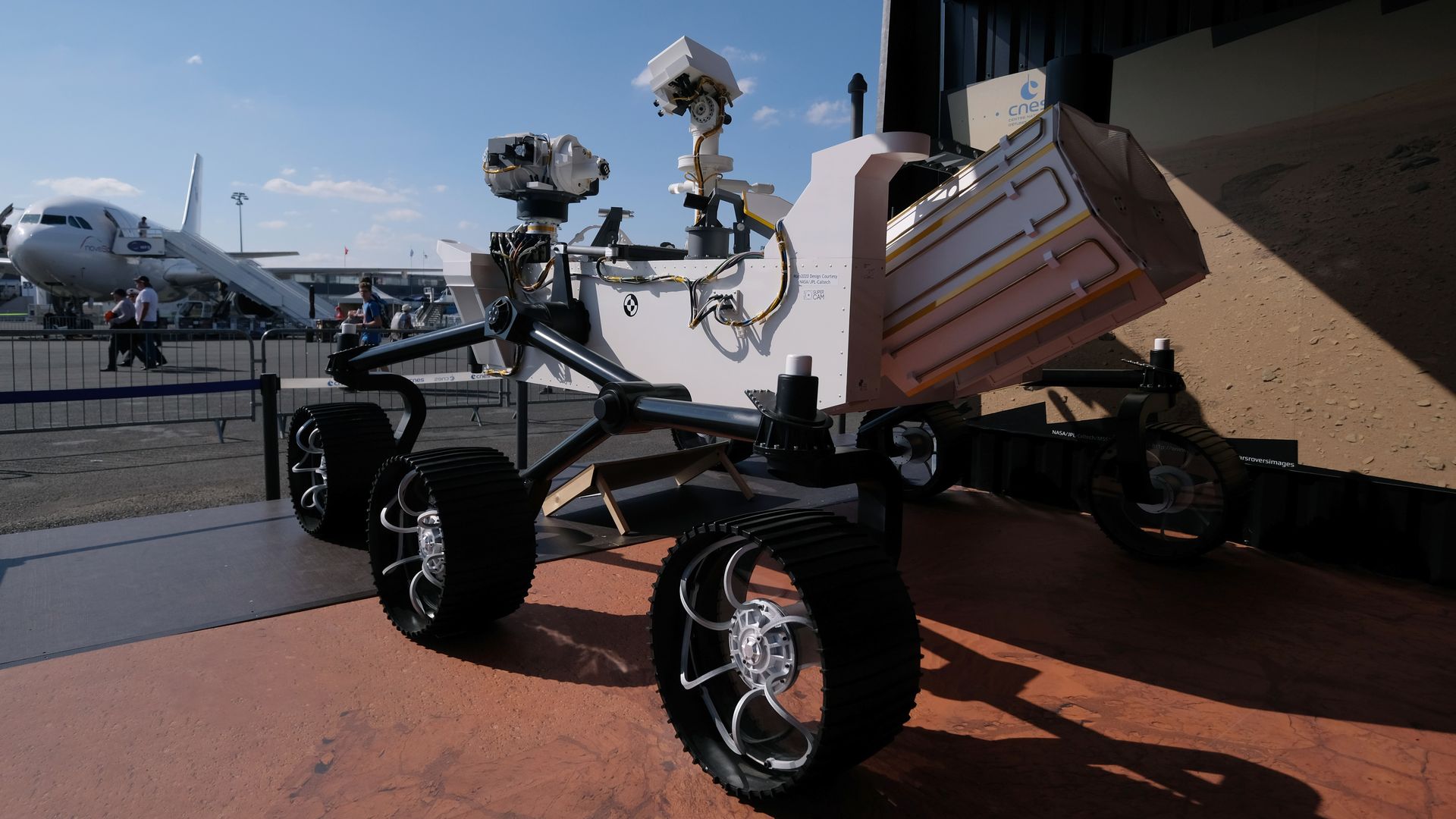
NASA's next Mars rover, the Mars 2020 rover, is set to launch in July 2020. The rover is designed to sniff out signs of past life on Mars.
Driving the news: NASA engineers are expected to install two high-definition cameras on the rover this week, per NASA. The Mastcam-Z will serve as the rover’s eyes, aiding in the spacecraft's movements and observations.
Key details about the Mars 2020 rover
- Launch window: July 17, 2020 - Aug. 5, 2020
- Launch location: Cape Canaveral Air Force Station, Florida
- Landing on Mars: Feb. 18, 2021
- Landing site: Jezero Crater, Mars
- Mission duration: At least one Mars year (687 Earth days)
- Rover size: About 10 feet long, 9 feet wide and 7 feet tall. (Roughly the size of a car.)
- Rover weight: 2,314 pounds
- Launch vehicle: A United Launch Alliance Atlas V
- Height with payload: 191 feet
- Mass (when fueled and with spacecraft attached): About 1.17 million pounds
- Technologies for Entry, Descent and Landing (EDL): Like NASA's Curiosity rover, the Mars 2020 rover will use a guided EDL system. However, the 2020 rover's landing system includes a parachute, descent vehicle and "skycrane maneuver" approach for lowering during the final seconds before landing that are more precise than Curiosity's were.
- The 2020 rover will also be able to detect and avoid hazardous terrain during its descent.
- Communication: The mission team will use NASA's Deep Space Network, an international network of antennas, that provides communication between mission teams on Earth and spacecraft.
- There are 3 complexes placed 120 degrees apart around the world: one in Goldstone in California's Mojave Desert, one near Madrid, Spain and another near Canberra, Australia.
- The rover also has a microphone that will allow it to record sounds on Mars.
Goals of the Mars 2020 rover
The rover's main goal is to explore the potential for life on Mars. In particular, it's looking both for conditions that suggest past life — or "past microbial life" — itself. Even if no signs of life are found, though, the rover will still help to understand whether and how future human life can develop on Mars.
- The rover also has a drill that will collect samples of rock and solids from the planet's surface and set them aside in a cache for a future mission to collect and bring back to Earth.
- It will also gather information to help inform future human trips to Mars — including testing methods for producing oxygen from Mars' atmosphere, identifying other resources, landing techniques and characterizing weather, dust and other environmental conditions.
Science instruments on the Mars 2020 rover
Per NASA, it includes:
- Mastcam-Z: An advanced camera system with panoramic stereoscopic imaging capability and zoom
- Mars Environmental Dynamics Analyzer: Sensors that measure temperature, wind speed and direction, pressure, relative humidity, dust size and shape
- Mars Oxygen ISRU Experiment: Technology that will investigate producing oxygen from Mars' atmosphere's carbon dioxide
- Planetary Instrument for X-ray Lithochemistry: Will help determine the fine scale elemental composition of Mars' surface materials
- Radar Imager for Mars' Subsurface Exploration: Radar providing resolution of its geological structure
- Scanning Habitable Environments with Raman & Luminescence for Organics and Chemicals: Help determine fine-scale mineralogy and organic compounds
- SuperCam: Will provide imaging and chemical composition analysis
1 fun thing about the Mars 2020 rover
Earthlings can submit their names to be sent to Mars with the rover. Engineers at JPL will beam the names, each which will be the size of about one-thousandth the width of a human hair on a single chip expected to be the size of a dime, per NASA. So far, NASA has received nearly 6 million names. Submissions close on September 30.







